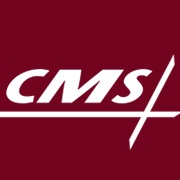CMS Issues Bundled Payment Models for Cardiac, Orthopedic Care
The finalized bundled payment models for cardiac and orthopedic care from CMS incentivize providers to improve care coordination.

- The Centers for Medicare & Medicaid Services (CMS) released earlier this week the finalized bundled payment models for cardiac and orthopedic care including the Medicare ACO Track 1+ Model, according to a CMS fact sheet. The bundled payment models for cardiac and orthopedic care are meant to prevent further hospitalizations and medical complications for Medicare beneficiaries.

The bundled payment models were created to assist physicians handling cardiac surgeries, cardiac rehabilitation, and heart attack treatment as well as aid orthopedic care including hip fracture and hip replacement surgery. The new regulations also provide primary care practices with an accountable care opportunity.
The new CMS bundled payment models for orthopedic and cardiac care align with Advanced Alternative Payment Models under the Quality Payment Program. The payment structures offer innovative ways for providers to reach the 5 percent incentive payment through Advanced Alternative Payment Models under MACRA legislation. Small practices can begin the cardiac and orthopedic care bundled payment program by partnering with hospitals as early as 2018.
The way bundled payment models work is by making hospitals financially responsible for the quality and costs across an episode of care. This leads providers to coordinate care more effectively throughout a hospital as well as post-acute care facilities.
“These new models advance CMS’ goal of improving the efficiency and quality of care for Medicare beneficiaries and encourage hospitals, physicians, and post-acute care providers to work together to improve the coordination of care from the initial hospitalization through recovery,” the CMS fact sheet stated.
The Acute Myocardial Infarction model along with the Coronary Artery Bypass Graft model will be implemented across 98 counties, the CMS fact sheet states. The Cardiac Rehabilitation (CR) Incentive Payment Model will be used across 45 geographic areas. More than 3,000 hospitals across the country will be participating in these bundled payment models for orthopedic and cardiac care.
There are certain restrictions to ensure high quality among providers participating in these bundled payment models. Providers must achieve a minimum level of quality before they can receive financial incentives related to spending that fell below the agreed upon price.
The Department of Health & Human Services (HHS) announced in a press release on December 20 how these bundled payment models are bringing federal agencies from paying providers for quantity through fee-for-service to quality through value-based care. Additionally, bundled payments are meant to reduce recovery time and the rate of complications among Medicare beneficiaries.
“Today, we’re proud to continue progress strengthening Medicare for beneficiaries, providers, and taxpayers with alternative payment models that reward the quality of care over quantity of services,” said HHS Secretary Sylvia M. Burwell. “These models give providers and hospitals the tools they need to provide the kind of high-quality patient-centered care we all want for our own families, while also driving down costs for the nation.”
The new regulations also involve the Medicare ACO Track 1+ Model, which will have less downside financial risk than Track 2 or 3 under the Medicare Shared Savings Program. Rural hospitals and physician groups will be able to participate in this accountable care organization model. New possibilities under the Medicare ACO Track 1+ Model will be available for as many as 70,000 clinicians participating in MACRA’s Advanced Alternative Payments in 2018.
“As a practicing doctor, I know the importance of hospitals, doctors, nurses and others working together to support a patient from heart attack or surgery all the way through recovery. These bundled payment models support coordinated care and can reward clinicians through the Quality Payment Program,” said Patrick Conway, M.D., CMS acting principal deputy administrator.
“The new ACO Track 1+ was developed based on heavy stakeholder input and will enable many more physician practices to progress to an advanced model that receives incentive payments. The model allows doctors and other clinicians to practice the way they want to – working with patients to redesign care and provide the best outcomes possible.”
The CMS bundled payment models for cardiac and orthopedic care are meant to reduce spending in some costly procedures. In 2014, upwards of 200,000 Medicare beneficiaries were admitted to the hospital after experiencing a heart attack or due to a bypass surgery, which cost CMS more than $6 billion. Treatments for cardiac events had some significant variations in cost across hospitals as well as hospital readmission rates within a 30-day time frame.
Additionally, CMS found that only 15 percent of Medicare beneficiaries received cardiac rehabilitation despite the fact that clinical studies have shown rehab can prevent secondary heart attacks. As such, the federal agency created bundled payment models for cardiac care to alleviate these problems.
Commercial payers may need to consider the results of bundled payment models, which may reduce the cost of care in certain expensive treatment areas such as bypass surgeries, orthopedic operations, or oncology. Bundled payment models should reduce the financial responsibility of payers by positioning more accountability onto providers to reduce spending and improve quality.
Dig Deeper:
How to Overcome the Challenges of Bundled Payment Models
How Medicare, Medicaid, and CHIP Guide the Health Payer Industry
